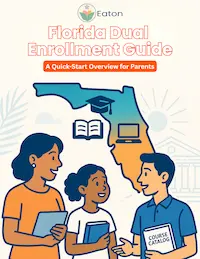Step Up Billing and Reimbursement for Homeschool Families
Are you a homeschooling parent looking to streamline your billing, tuition, and reimbursement process through Step Up For Students? You’re in the right place! Navigating the ins and outs of Florida’s scholarship programs doesn’t have to feel like deciphering a legal code. In this parent-friendly guide, we’ll explore all the critical aspects of Step Up Billing, Tuition, and Reimbursement so you can confidently manage your child’s educational finances. Whether you have a basic understanding of these programs or are starting from scratch, this post will help you make informed decisions that benefit both you and your learner.
1. Why “Step Up Billing, Tuition, and Reimbursement” Matters
From new homeschooling parents to seasoned veterans, Step Up For Students is a game-changer for making Florida’s scholarship funds work in your favor. However, it’s essential to understand how Step Up Billing, Tuition, and Reimbursement actually function to avoid costly surprises.
- Billing: How schools set tuition rates, apply fees, and invoice parents can differ from one program to another. Some rely on direct payments from Step Up; others require parents to pay first and then seek reimbursement.
- Tuition: Whether you’re paying for a full-time private school program or a part-time hybrid approach, your child’s scholarship can offset tuition expenses—but only if the fees are correctly documented and aligned with the scholarship requirements.
- Reimbursement: If you decide to pay out of pocket for certain services—think tutoring, testing, or extracurricular activities—you can often get reimbursed from your child’s scholarship account. Missing a step in this process, though, can lead to denied claims.
Understanding these aspects will help you more effectively direct scholarship dollars toward your child’s educational needs, whether it’s for core classes, specialized tutoring, or supplementary learning materials.
2. Step Up Billing, Tuition, and Reimbursement: Key Programs
When we talk about Step Up Billing, Tuition, and Reimbursement, we’re primarily referencing three main Florida scholarship programs:
- Florida Tax Credit (FTC)
- This provides full- or part-time private school tuition and fees coverage, plus leftover funds for eligible educational expenses if any remain.
- Designed for K–12 students, making it a major resource for homeschoolers who might tap into part-time enrollment options.
- Family Empowerment Scholarship for Educational Options (FES-EO)
- Similar to FTC in scope, FES-EO assists with private school tuition, mandatory fees, and additional education costs once tuition is covered.
- Personalized Education Program (PEP)
- This is best for families who choose not to enroll a student full-time in a traditional private school. Instead, funds act like a flexible “bank account,” covering approved curricula, part-time instruction, tutoring, and other educational resources.
- PEP families must create a Student Learning Plan (SLP) and submit prior-year standardized tests to maintain eligibility.
Each of these programs is handled through Step Up For Students, which means the billing, tuition, and reimbursement guidelines are relatively unified. For a broader breakdown of Florida scholarship choices, check out How to Get a Step Up Scholarship for Florida Homeschoolers. It details eligibility, deadlines, and insider tips to maximize benefits.
3. Full-Time vs. Part-Time Enrollment: What Changes for Billing and Tuition?
Step Up Billing, Tuition, and Reimbursement can vary significantly depending on your student’s enrollment status:
Full-Time Enrollment
- Invoicing Schedule: Schools typically invoice quarterly for tuition. Step Up For Students will pay the school directly within seven business days once both the parent and school approve the invoice.
- Tuition Rates: The published tuition schedule must be the same for all students, scholarship or not. If the scholarship doesn’t cover the full amount, families may need to pay the difference themselves.
- Managing Overpayments: Occasionally, if a student changes programs mid-year, a school might get overpaid. Step Up For Students will recoup excess funds by reducing future payments or invoicing the school for the difference.
Part-Time Enrollment
- Hybrid or PEP Approach: For PEP students, billing is often based on part-time classes rather than a flat full-time tuition.
- Direct vs. Reimbursement: Some private schools register part-time classes in the EMA (Education Market Assistant) Marketplace, letting you pay through your scholarship account directly. Otherwise, you pay out of pocket and later request reimbursement.
This distinction is vital—if you’re aiming for a full-time private school path, your billing cycles and tuition coverage will differ from parents using a partial or hybrid model. Families curious about structuring a hybrid schedule can explore Homeschool Requirements in Florida: A Practical How-to Guide to see how different enrollment approaches can meet state laws.

4. How to Invoice and Collect Tuition Through Step Up Billing, Tuition, and Reimbursement
Billing a student’s scholarship account can be straightforward if you understand the basics of Step Up Billing, Tuition, and Reimbursement. Here’s a simplified look:
- Set Tuition and Fees in EMA
- Eligible private schools must create or update a profile in EMA. They list official tuition rates and mandatory fees for each grade level.
- Only “required” fees such as application, enrollment, technology, or uniform charges may be added. Optional charges (e.g., after-school programs) generally aren’t covered.
- Enroll Full-Time Students
- Once a family chooses a private school option, both the school and the parent/guardian confirm the tuition rate in EMA.
- The rate cannot exceed the school’s published amounts. If the scholarship doesn’t cover the total, parents must pay the difference or arrange alternate financial aid.
- Quarterly Invoicing
- The school creates an invoice in EMA each quarter. Both the school and the parent approve it, which triggers Step Up to release funds (assuming the student’s scholarship account has sufficient funds left).
- Part-Time or PEP Services
- Instead of enrolling in the private school for a full load of classes, a parent or guardian can pick individual courses or services in the EMA Marketplace.
- For instance, if a PEP student wants just a single biology course or a band program, the school lists those as separate offerings for direct billing or for parents to pay and seek reimbursement.
- Parents’ Role
- You maintain final approval on any invoice. Check if the total matches your agreed-upon tuition fee. If there’s a discrepancy, sort it out with the school before approving payment.
For more insight on legally using scholarship funds, take a glance at How to Use Florida Scholarship Funds Legally. This can save you from unwelcome denials when you try to pay for certain classes, materials, or services.
5. Step Up Billing and Reimbursement Requirements Made Simple
Families sometimes prefer paying up front, then getting reimbursed from their scholarship. This is common when:
- A Tutor or Service Doesn’t Direct-Bill
Some smaller tutoring companies or extracurricular programs aren’t set up in EMA, so you pay first, then file for reimbursement. - Pre-Payment
You might pay tuition or fees slightly in advance (up to three months or more, under certain circumstances). The scholarship program allows advanced reimbursement if you provide proof that the fees are non-refundable.
Step-by-Step Reimbursement
- Make Your Purchase
- Ensure the service or product is on the list of eligible expenses (e.g., tuition, testing fees, or textbooks).
- Obtain an Itemized Receipt
- The receipt must clearly list the date, vendor, product or service purchased, and total cost.
- Submit Through EMA
- Go to your scholarship portal and fill out a reimbursement request.
- Wait for Approval
- If Step Up For Students finds your submission in line with scholarship rules, you’ll see the approved funds added back into your account (or paid to you, depending on the setup).
Keep in mind, items like before- or after-school care, lunch fees, and purely optional charges (e.g., yearbooks, purely social clubs) are typically excluded. For more details, you can also review PEP in Florida: End-of-Year Testing Guidelines to understand how academic compliance aligns with eligible spending.

6. Common Mistakes to Avoid in Step Up Billing and Reimbursement
Even with the best intentions, families and schools can trip over certain pitfalls. Here are some mistakes to avoid:
1. Failing to Confirm Enrollment Deadlines
Scholarships have specific cutoffs—like October 15 or January 15—to lock in your child’s funding. If you miss these, you might only receive 50% funding or none at all.
2. Overlooking Assessment Requirements
PEP students, for example, must submit annual standardized test scores to Step Up For Students. Missing that can jeopardize funding. If you need help figuring out what tests meet Florida standards, you might find Florida Homeschool Evaluations: Everything You Need to Know useful.
3. Mixing Eligible and Non-Eligible Fees
It’s tempting to lump all costs together, but you must separate out non-eligible items, such as sports gear or lunch. If these wind up on an invoice, your reimbursement or direct billing might get denied or delayed.
4. Not Keeping Receipts or Documentation
For reimbursements to go smoothly, you need detailed, itemized proof of purchase. Missing receipts create hurdles, and Step Up For Students will likely deny incomplete requests.
5. Giving Your Login to Schools or Providers
Under no circumstance should a school or service provider access your scholarship portal on your behalf. It violates confidentiality policies and may result in suspensions or penalties.
7. Additional Resources for Florida Homeschoolers
Need more information on Florida’s unique homeschool environment? Below are a few curated posts that align perfectly with your quest for Step Up Billing, Tuition, and Reimbursement:
- Homeschool Florida: Your Ultimate How-to Guide – A broad overview of Florida homeschooling from setup to legalities.
- Homeschool Requirements in Florida: A Practical How-to Guide – In-depth info about compliance, forms, and record-keeping.
- PEP in Florida: End-of-Year Testing Guidelines – Explains how to manage mandatory testing for Personalized Education Program participants.
- How to Use Florida Scholarship Funds Legally – Perfect for clarifying the do’s and don’ts of scholarship expenditures.
For official details on private school registration or scholarship regulations, you can browse the Florida Department of Education website. If you want to examine national statistics on school choice, EdChoice offers comprehensive data on similar programs around the country. And for financial or tax-related matters (like filing W-9 forms), consult the IRS for up-to-date guidelines.
8. Take the Next Step: Join Our Homeschool Online Classes
Ready to supercharge your child’s education with flexible, scholarship-friendly learning options? We’d love to help! Our innovative homeschool online classes align seamlessly with Florida scholarship requirements, making them an ideal fit for families looking to combine part-time private school instruction with a robust at-home curriculum.
Sign up for a homeschool online class today and watch your child thrive academically—without the headache of juggling unstructured schedules or obscure billing policies. Our caring instructors and tailored lesson plans will leave your learner excited about learning each day!

Final Thoughts
Mastering Step Up Billing, Tuition, and Reimbursement doesn’t have to be an overwhelming process. By carefully following program guidelines, keeping track of your child’s enrollment status, and knowing when to invoice versus when to seek reimbursement, you’ll streamline your finances and ensure you’re making the most of Florida’s scholarship funds.
Armed with the resources above, you’re well on your way to a financially confident and rewarding homeschool journey. Whether you choose a full-time private school, a part-time hybrid, or purely parent-directed learning through PEP, rest assured that clarity and organization are your greatest allies. Keep those receipts handy, pay attention to deadlines, and communicate openly with your chosen program or service providers.
Here’s to a successful and stress-free experience with Step Up Billing, Tuition, and Reimbursement—and an outstanding education for your child!



